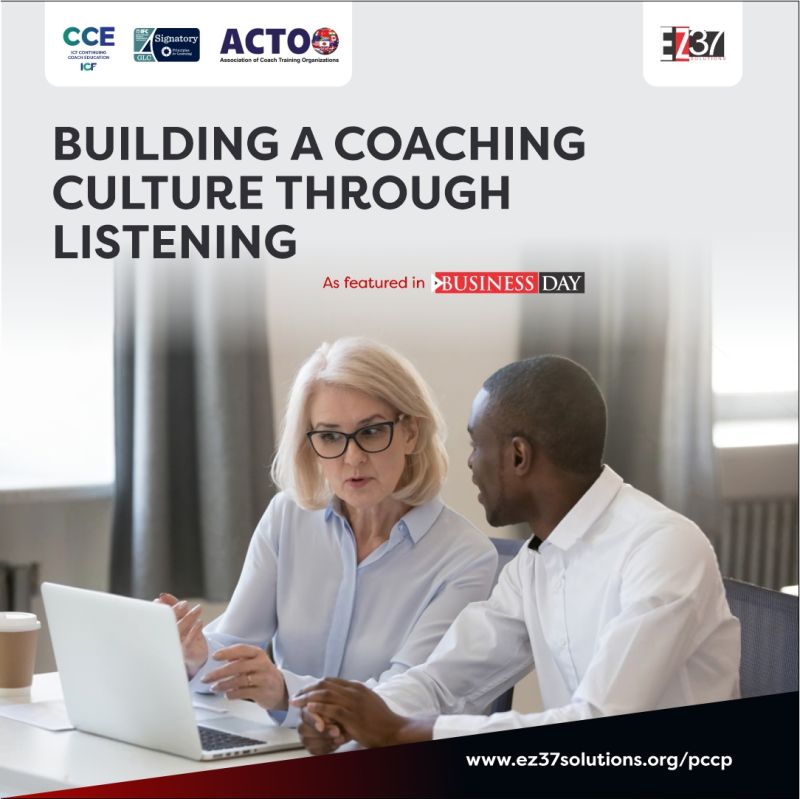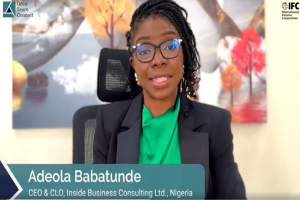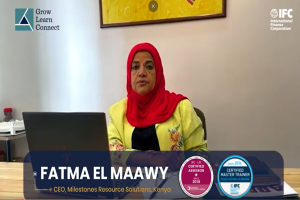Building a Coaching Culture through Listening
According to a study conducted by the International Coach Federation (ICF), only thirty-two percent of organizations use internal coach practitioners, external coach practitioners, and managers/leaders that leverage coaching skills. However, more than four in five (83%) organizations plan to expand the scope of their managers using coaching skills during the next five years towards the ultimate aim of building strong coaching cultures.
A major avenue through which organizations hope to incorporate these coaching skills is through effective communication. Communication is a vital part of improving company culture and fostering employee engagement, but often when executives are told to improve their communication, they resort to more emails, presentations, or memos. However, communication goes beyond that. The most impactful form of communication is through listening.
Though often overlooked, listening is a powerful leadership and coaching tool that has the ability to create an environment of safety when done well. Many studies have estimated that we spend between a third to half of our time listening, yet we remember only about half of what we hear immediately after someone has finished talking. When information is shared but not acted upon, it can result in negative consequences as employees feel unheard. In a survey conducted by Gallup, only 3 in 10 employees strongly agree that their opinions seem to count at work—this explains to a large extent low levels of engagement found in the workplace. On the contrary, when people feel their comments will be listened to and treated with respect, they are more likely to be open, engaged, and involved in the overall success of the organization.
“Good leaders listen before they act, and the best leaders prioritize listening to their best people”- Gallup
Listening however is a challenging skill to master and is easier said than done. Thus in order to improve, three dimensions must be considered.
First is internal listening; this is centered on listening to your own thoughts and worries even whilst speaking to others. This focus on yourself and your priorities prevents you from hearing what the other person may be saying.
Focused listening is the second dimension, and this goes beyond internal listening. It entails an attempt to focus on the other person through distractions that may be present which prevent you from fully connecting with what is being said.
Lastly is the 360 (or global) dimension of listening. This is where you listen not only to what the person is saying but how they say it and even what they’re not saying. Distractions are eliminated, and not only are you able to listen actively, but you are also able to acknowledge and inquire further on the information received. A simple guide to developing 360, or global listening is through the adoption of the LACE model:
(L) Listen—Listen for verbal and non-verbal cues. Here you strive to pay attention to cues such as body posture, tone of voice, shifts in body movement. These subtle cues can give insight into what an employee finds exciting or boring, it can show resistance or engagement with certain ideas.
(A) Acknowledge—Acknowledge to show that you are listening. Focus on the speaker by maintaining eye contact and eliminating possible distractions. It is important to suspend judgment, control emotions, and resist the urge to give immediate responses at this stage.
(C) Check—Check and clarify understanding through reflective inquiry of what you hear, notice, and observe. This means not assuming what is being said, but instead checking periodically by summarizing, paraphrasing, and mirroring key points raised to confirm.
(E) Enquire—Enquire more information from the client by asking questions. Listening should not be the end of the conversation, but instead the start. It should serve as an avenue to foster continued dialogue or initiate an action plan.
In addition to two-way conversations and improved listening between managers and their team, organizations must scale up listening in order to transform the workplace to a ‘listening organization’. There is the need to expand listening beyond one-on-one relationships, and instead make it organization-wide. This entails making structural, cultural, technological, and policy changes, in addition to the changes taking place within the human resource level.
Even in a world of limitless, instantaneous, global connections, the most powerful mode of communication is through listening. People don’t just want to belong, they want to contribute. You can give your team the opportunity to do so by applying the steps discussed above. In the process of having more candid, mutually respectful conversations, your team will become more cohesive and able to work together more powerfully.
Adaora Ayoade PCC is an executive and leadership coach and CEO of EZ37 Solutions Limited, a world-class human resource, and management consulting firm focused on providing innovative and impactful solutions.
For more information on this topic or to enquire about becoming a certified coach visit www.ezcoaching.org or email coaching@ez37solutions.org.





